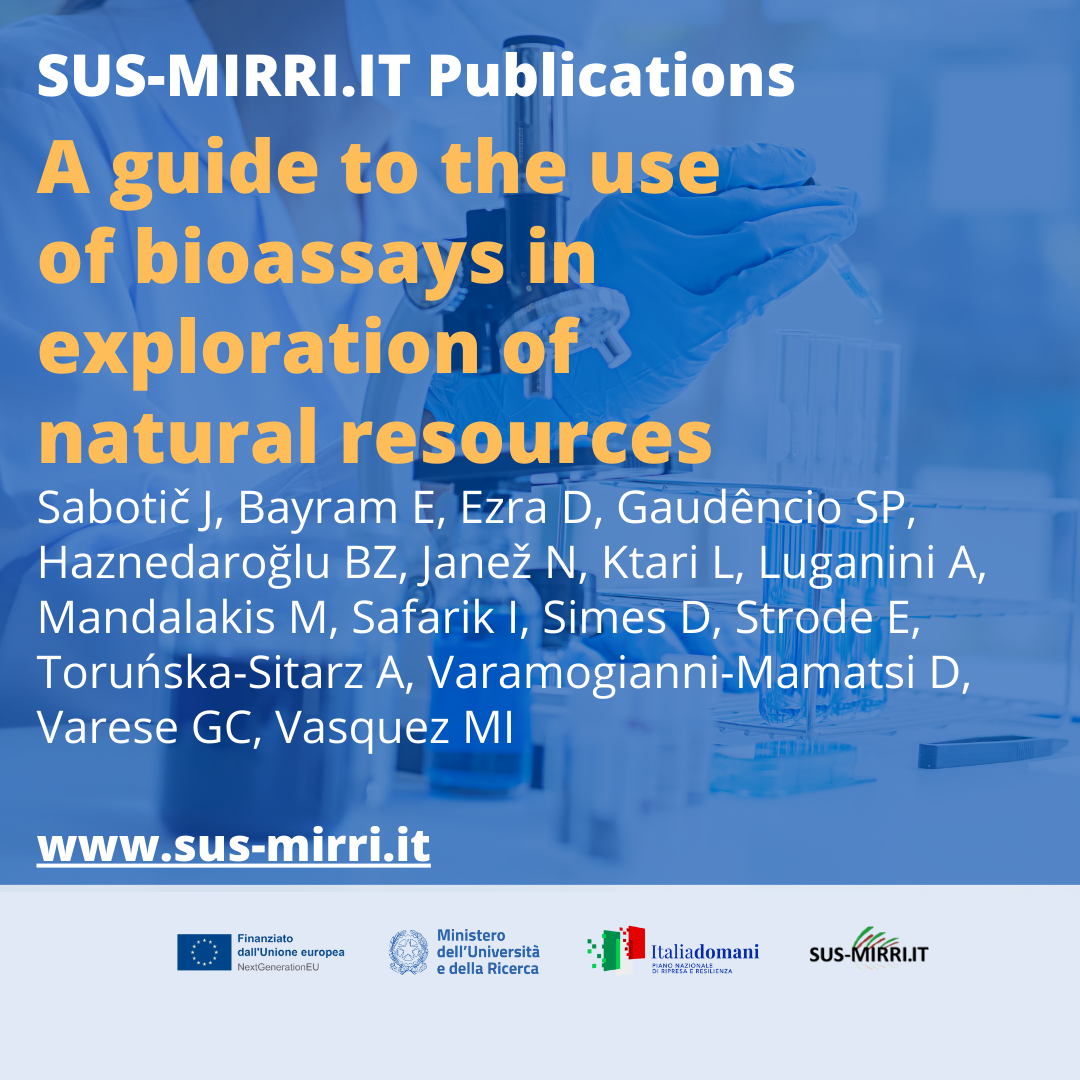Sabotič J, Bayram E, Ezra D, Gaudêncio SP, Haznedaroğlu BZ, Janež N, Ktari L, Luganini A, Mandalakis M, Safarik I, Simes D, Strode E, Toruńska-Sitarz A, Varamogianni-Mamatsi D, Varese GC, Vasquez MI. 2024 A guide to the use of bioassays in exploration of natural resources. Biotechnology Advances Vol. 5:71:108307 36 https://www.sciencedirect.com/science/article/pii/S0734975024000016?via%3Dihub
Abstract
Bioassays are the main tool to decipher bioactivities from natural resources thus their selection and quality are critical for optimal bioprospecting. They are used both in the early stages of compounds isolation/purification/identification, and in later stages to evaluate their safety and efficacy. In this review, we provide a comprehensive overview of the most common bioassays used in the discovery and development of new bioactive compounds with a focus on marine bioresources. We present a comprehensive list of practical considerations for selecting appropriate bioassays and discuss in detail the bioassays typically used to explore antimicrobial, antibiofilm, cytotoxic, antiviral, antioxidant, and anti-ageing potential. The concept of quality control and bioassay validation are introduced, followed by safety considerations, which are critical to advancing bioactive compounds to a higher stage of development. We conclude by providing an application-oriented view focused on the development of pharmaceuticals, food supplements, and cosmetics, the industrial pipelines where currently known marine natural products hold most potential. We highlight the importance of gaining reliable bioassay results, as these serve as a starting point for application-based development and further testing, as well as for consideration by regulatory authorities.
Read the complete article here: https://www.sciencedirect.com/science/article/pii/S0734975024000016?via%3Dihub



